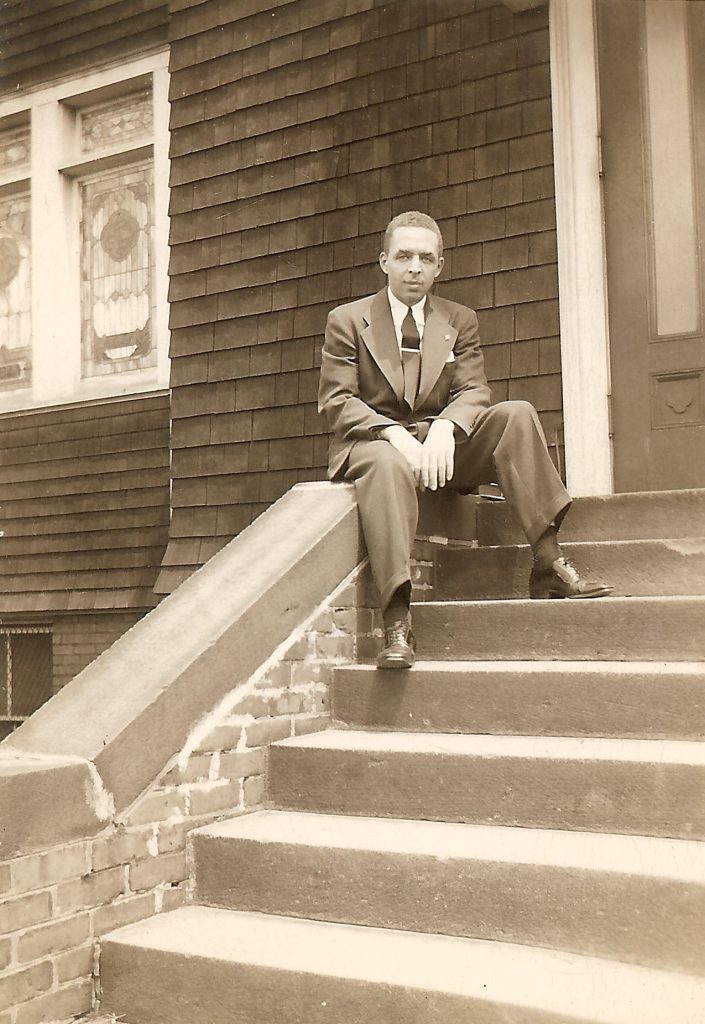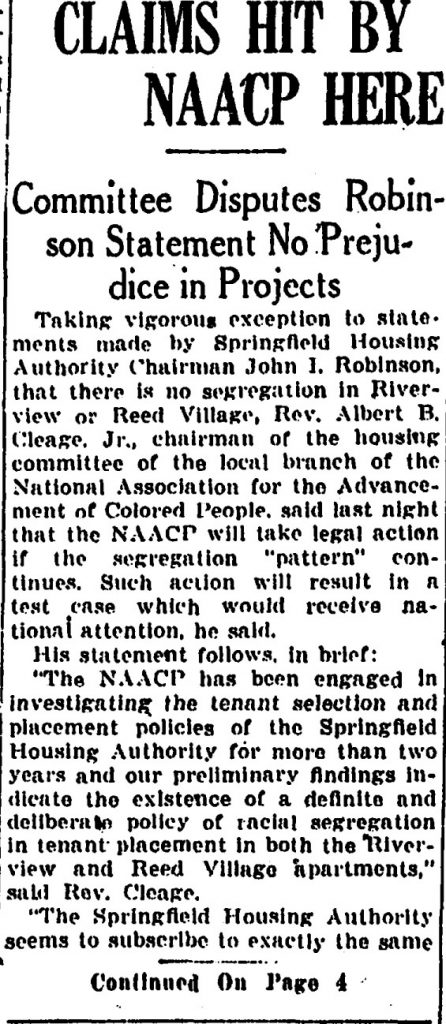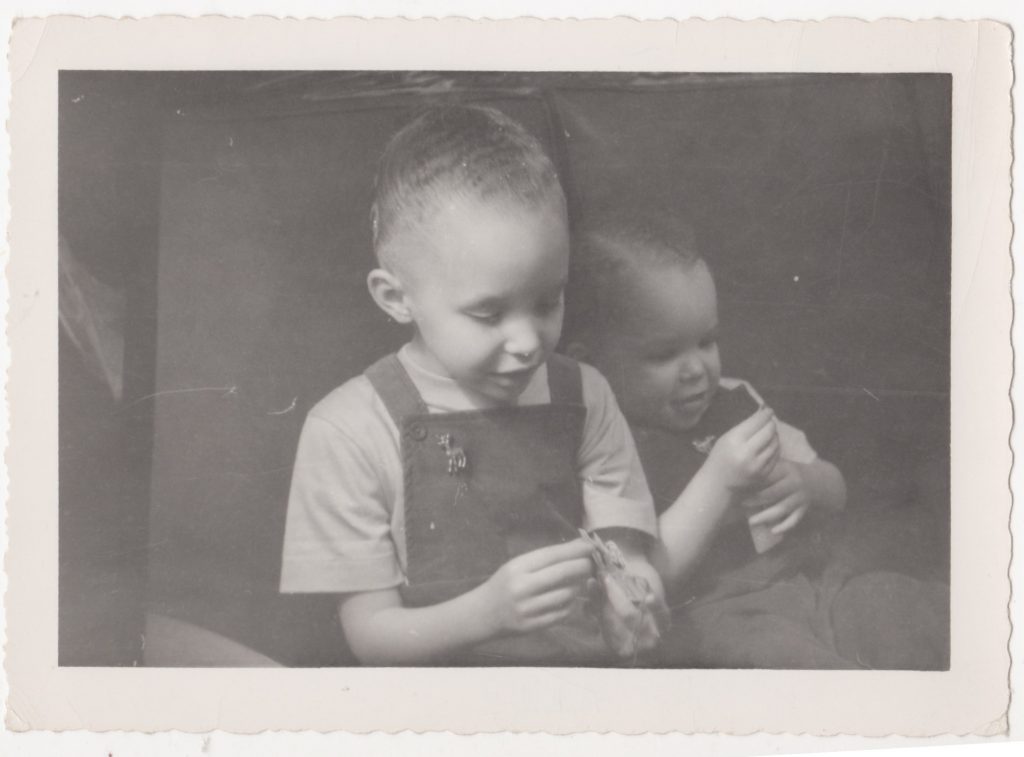This is my ninth year of blogging the A to Z Challenge. Everyday I will share something about my family’s life during 1950. This was a year that the USA federal census was taken and the first one that I appear in. At the end of each post I will share a book from my childhood collection.
Claims Hit By NAACP here
Committee Disputes Robinson Statement No Prejudice in Projects
Taking vigorous exception to statements made by Springfield Housing Authority Chairman John J. Robinson, that there is no segregation in Riverview or Reed Village, Rev. Albert B. Cleage Jr., chairman of the housing committee of the local branch of the National Association for the Advancement of Colored People, said last night that the NAACP will take legal action if the segregation “pattern” continues. Such action will result in a test case which would receive national attention, he said.
His statement follows in brief:
“The NAACP has been engaged in investigating the tenant selection and placement policies of the Springfield Housing Authority for more than two years and our preliminary findings indicate the existence of a definite and deliberate policy of racial segregation in tenant placement in both the Riverview and Reed Village apartments,” said Rev. Cleage.
“The Springfield Housing Authority seems to subscribe to exactly the same racial theories as those advanced by some of the residents of Amore Village who stated that they were not prejudiced, but felt that Negroes should live to themselves. The Springfield Housing Authority seems to believe that Negroes and whites living in the same projects must be segregated in separate Negro and white units. The fact that this discriminatory policy existed at Riverview first prompted an NAACP investigation and eventually a conference with the Springfield Housing Authority.
“The NAACP Housing Committee reported its findings back to the Executive Committee and was unanimously authorized to continue its investigation until the Reed Village segregation pattern had been definitely established, and if such a pattern was continued, to proceed in co-operation with the organization’s Legal Redress Committee to take legal action against the Housing Authority. The NAACP case against segregation in Public Housing will receive full support and cooperation from the National Legal Staff of the NAACP. When and if legal action is taken, Thurgood Marshall of New York, who has already been consulted regarding developments, will be asked to handle the case. Such a development will receive national attention as a test case and for that reason the Housing Committee is proceeding with understandable care in preparing its case.
“The case will again test the principle that separate but equal is an actual impossibility already established by the NAACP on many legal fronts. The NAACP contends that a pattern of segregation as practiced by the Springfield Housing Authority contradicts the non-discriminatory provisions of both the state and national Housing Acts from which the Springfield Housing Authority derives its powers. The Springfield Branch of the NAACP in no way endorses or condones the policies of the Springfield Housing Authority.”
From The Springfield Union November 1, 1950
_______________
’m also participating in the Genealogy Blog 1950s Blog Party hosted by Elizabeth Swanay O’Neal, “The Genealogy Blog Party: Back to the 1950s,” Heart of the Family™ https://www.thefamilyheart.com/genealogy-blog-party-1950s/






Oh how I remember “separate but equal” and it never was equal at all! So glad your father was bringing these things to light…to move toward justice.
I didn’t realize how much was going on as I was an oblivious little kid.
Such a cute book!
Ronel visiting for the A-Z Challenge My Languishing TBR: S
A favorite of mine.
Good for Rev. Cleage and the NAACP! Their actions were undoubtedly aimed at a better life for you and Pearl.
He devoted his life to justice for the Race. Of course we were included, but it was all bigger than us.
How did you preserve all these pictures ? That too with super quality …. i zoomed in to try to figure out what snack you were eating … and interesting piece of news there … theres a video of Scuffy too… 🙂
My father put the in an album back then. In the last few years the pages were crumpling and I photographed them and took the photos out. I hate to say they are in a box right now, waiting for me to put them in another album.
I blew that photo up too! Couldn’t decide what we were eating.
I’m so glad you have all these things even the articles to be reminded of. I could never understand how people in leadership could read what they had said and live with their decisions.
you were both such adorable little ones
Thanks also for your visit and have an awesome last week of A to Zing.
I was reflecting, before I read your comment, that at least some of your family’s activism must have passed you by when you were little. He was doing such important work but did you ever feel like you were less important?
I don’t remember ever feeling that way. I may have seen him more than a child who’s father worked in an office. His office at that time was in the same house, the church was next door. He was there for dinner. What would I have compared it to? That was the way my life was. I had no idea what other people’s lives were like,
When we were older we still saw him often and sometimes went to he meetings etc along with him. It was the way the family was.
Very interesting, I’m sure we had the same types of issues here in Australia but I don’t remember them. I think as kids what you remember most are those that are directly around you like your father. I admire you doing the A to Z Challenge I did it a few years ago and it was exhausting but very rewarding.
I don’t remember the racist incidents as a 3 or 4 year old, but when I looked for news articles from that time and place, there they were. They were happening while I was lining up my dolls or taking a nap.
The time I finished up my posts early and kept them short. It was much less exhausting than when I write and research day by day!